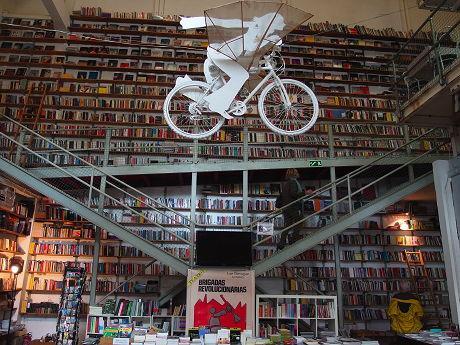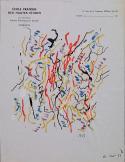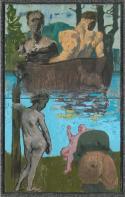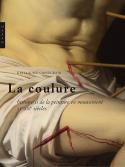Art Of The Day Weekly
#386 - from 30 April 2015 to 6 May 2015

Ler Devagar Bookshop at LX Factory, Lisbon (Photo Anaïs Pic)
IN THE AIR
Letter from Lisbon
How does culture adapt during periods of crisis? In Portugal, the major institutions seem to have overcome the obstacle, as foreign attendance has made up for the void of internal demand. With the “special family” ticket for example (set at €49 for 4 persons), the castle of Sintra, the romantic folly of King Dom Fernando, is never empty. It is true that the budget of the ministry of Culture (only created in 1995, right before the 1999 law on sponsorship) remains blocked around 0.5% of the GNP). But the tradition of private financing continues to play a leading role: the Fundação Gulbenkian, founded by the Armenian oil tycoon (“Mr. 5%”), is an emblematic example with its activity in the worlds of music, cinema or the visual arts. There are few new museums, if one except the MUDE (Museum of Fashion and Design) in 2009 and, very recently, the Museu do Aljube, inaugurated in the former political prison on 25 April 2015, the anniversary of the Carnation revolution. What if the crisis also had positive aspects? It has been conducive to develop informal encounters and given more visibility to the underground scene. Porto has welcomed since 2014 a true collection of art brut at Oliva Creative Factory. In Lisbon, the new trendy place is the LX Factory, set up in former warehouses under the gigantic 25-April bridge. Fashion and design boutiques, restaurants, architect firms and, in a reconverted printing press, one of the most impressive bookstores in Europe, Ler Devagar.
EXHIBITIONS
Van Gogh's circle
OTTERLO – Brave old Vincent, who never sold a painting while he was alive, except to his friend Anna Boch, and whose paintings were used to cover the holes in the chicken coop, has become today’s flagship of modern painting, right next to Cézanne and Picasso. If he knew it he would die laughing! But how can we measure that undeniable influence? The Kröller-Müller museum, for which it is easier than others as it holds the second Van Gogh collection in the world, took a try at it by crossing the keys to read these works. Those by disciples and admirers –like Toorop - as well as those who inspired him – like Millet - and some of his contemporaries - like Fantin-Latour – are hung side by side to show in what Van Gogh was revolutionary or simply an artist of his time. Human figures, landscapes, urban scenes, still lifes: these four genres suffice to frame Van Gogh’s universe. Cézanne, Ribot, Maximilien Luce and Isaac Israels accompany him. For once Van Gogh is not alone with Gauguin.
• Van Gogh and Co at the Kröller-Müller Museum, from 25 April to 27 September 2015.
Signs from Barthes
PARIS – We are familiar with his digressions on the Citroën DS (in Mythologies), with his semiological analysis of our times (L’Empire des signes), his friendship with Sollers and the Nouveau Roman, or even his very strong link (like Pasolini) between this old bachelor and his mother. A retrospective is organized to commemorate the centennial of Roland Barthes’ birth (1915-1980), and it shines light on the genesis of Fragments d’un discours amoureux, his typed writings and his drawings. His downstrokes and upstrokes presented everywhere in an architect’s scenography (Patrick Bouchain), may be admired or read as a true, iconographic motif. There is beauty behind the sense: he would have liked that metaphor.
• Les écritures de Roland Barthes. Panorama, at the Centre Pompidou from 5 May to 26 July 2015.

Louis Soutter, Parvis, 1937-1942, drawing with fingers, ink on paper. Courtesy Galerie Karsten Greve, Cologne, Paris, Saint-Moritz, © Galerie Karsten Greve, Cologne
Soutter, a drawing giant
PARIS –We saw him a few years ago at the Maison rouge. It is impossible to classify Louis Soutter (1871-1942), except in the category of art brut. He was a violinist, he accompanied silent movies, was anguished and neurotic. He only began to draw at the age of 50. Here he is confronted to another visionary whose novels he admired, Victor Hugo. The hallucinating images of the former respond to the other’s harmonious vibration: the same pointed castles like threatening forests, the same trembling characters like Goya’s nightmares. Soutter blackened dozens of school children’s notebooks and paper of refined grain, supplied to him by his cousin Le Corbusier. When his fingers could no longer hold the pencil, he would dip the former directly in the car body paint, painting until he was breathless. That ink would become his tumb.
• Louis Soutter, Victo Hugo, dessins parallèles at the Maison de Victor Hugo, from 30 April to 30 August 2015.
ARTIST OF THE WEEK
Markus Lüpertz, another Germany
Markus Lüpertz (born in 1941) was one of the wild boys of the young German scene in the 60s, together with Baselitz and Immendorff. The latter is the object of an exhibition at the fondation Maeght in Saint-Paul de Vence until 14 June. Lüpertz, a former iconoclast, is considered today a “confirmed artist”, a “classic”. Gifted both for drawing and for sculpture he thought nothing of going from figurative to abstract art, he confronted his country’s past. He has gone from Dithyrambic paintings in 1964, inspired by Nietzsche, to the recurrent theme of a soldier’s helmet; from the Antiquity that so fascinated Goethe as well as the paladins of the Third Reich, to the new type of utopia we see in his recent Arcadies. He has constantly renewed himself while enjoying a great number of contradictions: quite the contrary to the massive and stubborn German we can see in the history books of the Third Republic.
• Markus Lupertz, at the musée d’Art moderne de la Ville de Paris from 24 April to 19 July 2015.
BOOKS
Fresh paint
The attention Daniel Arasse gave details in painting had made him famous. In the same line of thought, one of his former students looks closely at a bizarre motif, drippings. While it is easy to detect in Pollock's "dripping", a piercing eye is sometimes needed to unveil them. Who noticed the blood that delicately stains the neck of saint Stephen in Jean Fouquet's diptych in Melun and kept at the Gemäldegalerie of Berlin? Sweeping wide, through the primitive painters from Siena to Cy Tombly or to photographer Bernard Plossu – the art historian shows the status of this accessory, which is not limited to the blood highly valued by religious paintings. What does it mean? Is it the affirmation of the supreme power of the artist when he amuses himself by leaving incongruent grease stains, censured by the academy? Or is it rather the proof of his extreme technical virtuosity (in the transparent portrayal of the tears for example)?
• La coulure. Histoire(s) de la peinture en mouvement. XIe-XXIe siècles, by Guillaume Cassegrain, Hazan, 2015, 256 p., €45.
OPENINGS OF THE WEEK

Festival européen de la photographie de nu
6 May 2015 - ARLES - Espace Van Gogh
The 15th edition of a festival that summons the latest trends in nude photography (Photo Franck Vallet)
IN BRIEF
CHAUMONT-SUR-LOIRE - The Festival international des jardins is being held from 23 April to 1 November 2015.
KATHMANDU - Apart from the loss in human lives, the earthquake that hit Nepal on 25 April 2015 also had a major impact on monuments listed on the Unesco World Heritage List.
LOS ANGELES - The Paris Photo LA fair is being held from 1 to 3 May 2015.
MILANO - The Universal Expo 2015, on the theme of nourishment, opens on 1 May 2015.
NEW YORK - The extension of the Whitney Museum, in the Meatpacking district and designed by architect Renzo Piano, will open on 1 May 2015.




